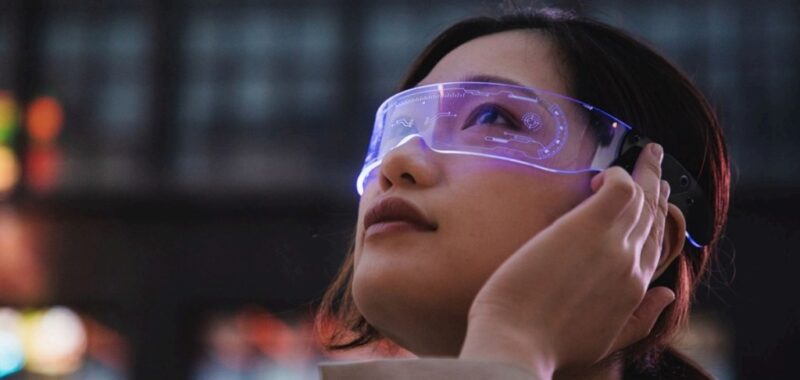Aledia unveiled its microLED factory and a $200 million production line to make augmented reality displays.
The Grenoble, France-based company wants to change the future of hardware for augmented reality and to power the next generation of displays for vision applications. It made the announcement at CES 2025, the big tech trade show in Las Vegas this week.
Tech giants have recently doubled down on microLED for smart glasses, releasing prototypes and targeting commercial launches as early as 2027. While AI-powered use cases for AR have emerged over the last year, critical hardware challenges — power consumption, bulkiness and manufacturing costs — remain significant barriers to mass adoption.
AR demands displays that combine extreme brightness, compact size and low power consumption for long battery life. Existing technologies like OLED (organic LED) and LCOS (Liquid Crystal On Silicon) fall short in these critical areas, yet to reach the full potential of truly immersive AR experiences, Aledia said.
AR devices need bright displays for all lighting conditions, both indoor and outdoor. The devices must also be compact, fitting into the small form factors required for AR glasses and other devices. They also need long battery life and they have to be affordable to make.
Both OLED and LCOS technologies emit light in all directions, while only light emitted in a narrow cone can be used by the AR glasses.
After 12 years of relentless R&D, a portfolio of nearly 300 patents and $600 million in investment, Aledia said it has shattered these barriers. With its groundbreaking microLED-based microdisplay – the most efficient, monolithically grown with Red, Green and Blue microLEDs on the same substrate that are natively directive – the company said it can solve the toughest hardware challenges, paving the way for the most immersive, AI-powered AR vision experiences ever conceived.
“Immersive technologies such as AR haven’t reached their full potential as the industry has yet to design screens that are both slick and highly functional,” said Pierre Laboisse, CEO of Aledia, in a statement. “At Aledia, we’ve created a nanowire technology that makes microLED displays thinner, more power efficient and easier to produce for mass adoption. By next CES, OLED and LCOS will already be phased out in favor of our superior microLED technology.”
Aledia’s microLED platform for AR

Aledia’s microLED technology based on 3D gallium nitride (GaN) on silicon nanowires opens the way to the next generation of smart displays.
The company said itss 3D GaN nanowire technology delivers enhanced brightness and energy efficiency compared to 2D LED, along with superior pixel density and resolution. The 3D structure allows precise and directive light emission, making Aledia’s displays highly efficient and suited for advanced applications like AR.
During R&D testing, Aledia’s nanowires improved directivity and light efficiency in real-world settings, which are crucial for immersive AR experiences.
Aledia said it has superior battery life in a compact package. Aledia’s hybrid bonding technology combines microLED and driver electronics into the smallest and smartest chip on the market, resulting in thinner displays and superior power efficiency for longer battery life.
Cost-effective manufacturing that scales

Aledia’s advantage lies in its over $200 million in-house pilot production line at the center of Europe’s “Display Valley,” enabling faster iteration without initial volume constraint. By utilizing semiconductor-grade silicon in 8-inch and 12-inch formats, Aledia lowers production costs for large-scale production of microLEDs, accelerating widespread adoption in a wide range of displays. Aledia is ready and able to support customer demand ramp up to nearly 5,000 wafer starts per week.
“Our Champagnier factory is a key milestone for European innovation, and we are proud to represent it at the Auvergne Rhône-Alpes Pavilion at CES,” said Laboisse. “We are redefining global standards of display technology with our efficient and high-performing chips, positioning Grenoble as the global center of microLED production.”
To experience Aledia’s technology at CES 2025, visit Booth 60711-04 at Eureka Park, in Hall G at the Venetian.
Aledia was founded in 2011, and it has more than 300 patents and 60 of its employees have doctorates.
Source link


